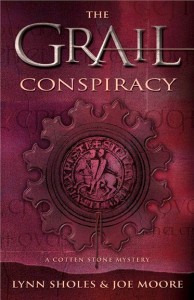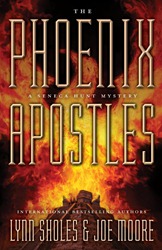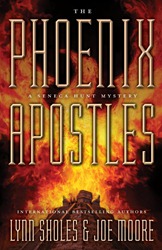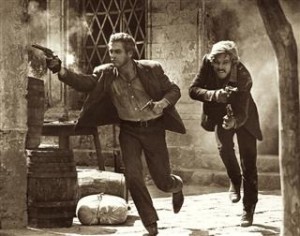By Joe Moore
We’ve been talking quite a bit this week about online reviews, especially those on Amazon, B&N and other sites, and the fact that some authors have admitted to paying for glowing reviews in order to boost sales, so-called sock-puppet reviews. I think we all agree that this is a truly deceitful practice and should be condemned. Many well-know authors are speaking out on this. But I find it more that dishonest, it’s just plain sad. If a writer has so little faith in his or her work that a viable option is to purchase 5-star reviews, that’s sad. Our work should be accepted or rejected on its own merit—it should stand on its own.
No book has ever been declared great by everyone who read it. There will always be those who dislike a book for more reasons that we can count. As a matter of fact, it never ceases to amaze me the vast span of reactions to books including my own and those of my friends. Pick any bestseller and you’ll find someone who loves it and someone else who doesn’t. And often both are willing to say so, in the strongest of terms. There are more than enough good, bad and ugly reviews to go around.
So I thought that instead of talking about online reviews, I’d share some of mine with you. I’ve listed 5 of my thrillers (all co-written with Lynn Sholes) and a sample of the good, the bad and the ugly online reviews we’ve received over the years.
Disclaimer: I have no idea who wrote and posted these nor have I ever paid for a review. These samples were gathered from Amazon and Goodreads.
THE PHOENIX APOSTLES
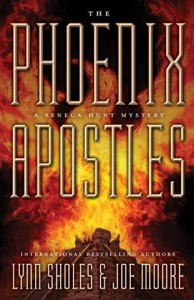 The Good: “I’ll read anything these two authors write. I have to be careful not to put a spoiler in this review, but there is one scene that knocked me off the sofa. I don’t often squeal during a movie scene when the bad guy comes out from around the dark corner, but there was a scene in this book that made me jump and I almost flung the book across the room. I won’t tell which one it was because I don’t want to ruin it for any other reader.”
The Good: “I’ll read anything these two authors write. I have to be careful not to put a spoiler in this review, but there is one scene that knocked me off the sofa. I don’t often squeal during a movie scene when the bad guy comes out from around the dark corner, but there was a scene in this book that made me jump and I almost flung the book across the room. I won’t tell which one it was because I don’t want to ruin it for any other reader.”
The Bad: “I just couldn’t figure out if this book was for "young adult" reading or "teen reading" or adults or Christian reading or even anti-religion.”
The Ugly: “The writing is deplorable, the style so bland I had to read a page twice to make sure it was indeed that bad!”
THE GRAIL CONSPIRACY
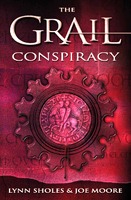 The Good: “What I want to know is when is this going to come out as a movie? It has to be one of the most exciting thrillers I have ever read. I was hooked from the first page on when Cotten Stone (the main character) stumbles onto the dig site of the Crusader’s tomb.”
The Good: “What I want to know is when is this going to come out as a movie? It has to be one of the most exciting thrillers I have ever read. I was hooked from the first page on when Cotten Stone (the main character) stumbles onto the dig site of the Crusader’s tomb.”
The Bad: “This started with interesting characters and action, but the quality of writing was fair and the story went downhill. Would not recommend even as a beach book.”
The Ugly: “The book was simply boring and poorly written. The characters had no depth. The plot took forever to go anywhere.”
THE LAST SECRET
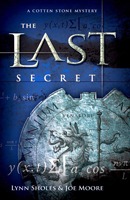 The Good: “This was one of those books you cannot put down. Basically I was on the edge of my seat so to speak whilst reading it. Exciting, mysterious. Well written, keeps you guessing. Loved it… Would recommend as great reading!”
The Good: “This was one of those books you cannot put down. Basically I was on the edge of my seat so to speak whilst reading it. Exciting, mysterious. Well written, keeps you guessing. Loved it… Would recommend as great reading!”
The Bad: “It takes more than an exotic location and some perceived struggle between good and evil to make a good story.”
The Ugly: “Religious hype … I was totally disappointed.”
THE HADES PROJECT
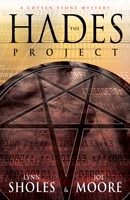 The Good: “Lynn Sholes & Joe Moore have given us an exciting, fast moving, and scary novel. The proverbial "page turner".
The Good: “Lynn Sholes & Joe Moore have given us an exciting, fast moving, and scary novel. The proverbial "page turner".
The Bad: “I had a hard time liking the main character, Cotten Stone. She was a bit too whiny for my taste.”
The Ugly: “A waste of my time.”
THE 731 LEGACY
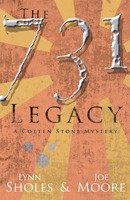 The Good: “Lynn Sholes and Joe Moore do a masterful job of telling an engaging story that involves religious prophecy, global disaster, mass plague and an unbelievable revenge plot against the U.S. and its allies by a long-forgotten enemy.”
The Good: “Lynn Sholes and Joe Moore do a masterful job of telling an engaging story that involves religious prophecy, global disaster, mass plague and an unbelievable revenge plot against the U.S. and its allies by a long-forgotten enemy.”
The Bad: “It was so predictable.”
The Ugly: “This book was a big ‘I don’t care what happens to you, no matter how sad it may be’ kinda story for me. The first time I read a Sholes & Moore book, and definitely the last time.”
So now that you’ve seen a few of my good, bad and ugly reviews, how about you guys? Got the guts to share the best and worst you’ve received? What about those of you that have posted online reviews? Without revealing the book title or author, want to share your good, bad and ugly comments?

